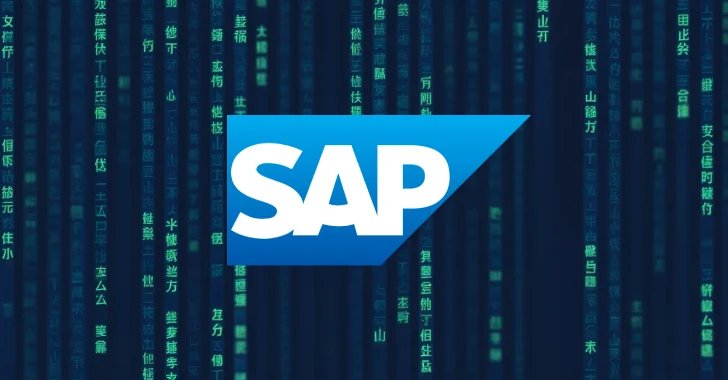Quick Takeaways
-
Critical Vulnerability Exploitation: A severe security flaw in SAP NetWeaver (CVE-2025-31324) is being actively exploited by Chinese state-sponsored actors to compromise critical infrastructure worldwide, including utilities and government entities in the UK, US, and Saudi Arabia.
-
Remote Code Execution Risk: The vulnerability allows for unauthenticated file uploads leading to remote code execution, enabling attackers to deploy web shells and maintain persistent access to compromised systems.
-
Multiple Threat Groups Involved: At least three China-linked hacking groups—CL-STA-0048, UNC5221, and UNC5174—are using this vulnerability for reconnaissance and to deploy malware like KrustyLoader and VShell, underscoring a coordinated effort to target SAP systems.
- Urgent Patching Required: Organizations using SAP NetWeaver must promptly apply security patches (SAP Security Note 3594142 and 3604119) to mitigate risks from both CVE-2025-31324 and a newly identified defect (CVE-2025-42999), which also poses a significant security threat.
Problem Explained
On May 13, 2025, Ravie Lakshmanan reported a significant security breach stemming from a critical vulnerability, CVE-2025-31324, in SAP NetWeaver. This flaw, which allows unauthenticated file uploads leading to remote code execution, has been effectively weaponized by multiple nation-state actors linked to China, targeting critical infrastructure across the globe. Notably, the intrusion has compromised natural gas distribution networks, water management utilities in the UK, and medical manufacturing in the US, among other sensitive sectors. Analysis from EclecticIQ’s Arda Büyükkaya revealed that several Chinese hacking groups, identified as UNC5221, UNC5174, and CL-STA-0048, are exploiting this vulnerability to maintain persistent access and deploy malicious payloads across various systems.
The breaches were traced back to a compromised server that exhibited significant activity logs, including exploiting the vulnerability to establish backdoors and execute remote commands. In concert with the alarming findings, concurrent reports indicated that another China-linked actor, dubbed Chaya_004, has also been involved in this exploitation, employing tools like the Go-based reverse shell SuperShell. Security firms like Onapsis have urged organizations utilizing SAP NetWeaver to promptly apply the necessary security patches to mitigate the ongoing risks and protect against potential future breaches. The exploitation of both CVE-2025-31324 and a newly discovered vulnerability, CVE-2025-42999, showcases a worrying trend in targeting widely-used enterprise applications, emphasizing a pivotal need for enhanced cybersecurity measures across critical infrastructure sectors.
Critical Concerns
The exploitation of the CVE-2025-31324 vulnerability in SAP NetWeaver poses significant risks not only to directly targeted organizations but also to a broader ecosystem of businesses and users connected to critical infrastructure. As nation-state actors, particularly from China, exploit this flaw for malicious purposes—including remote code execution across vital sectors like natural gas, water management, and healthcare—the ripple effects could destabilize supply chains, compromise sensitive data, and undermine public trust in digital systems. Secondary targets may include organizations relying on compromised infrastructure, leading to cascading failures in service delivery, regulatory compliance, and operational integrity, thereby escalating the threat landscape for both public and private entities. Consequently, organizations that fail to prioritize patching and fortifying their defenses against such vulnerabilities could find themselves vulnerable not only to immediate threats but also to reputational damage and financial losses stemming from potential breaches or service disruptions across interconnected networks.
Possible Remediation Steps
Timely intervention is paramount in safeguarding critical infrastructures against the incursion of sophisticated adversaries, particularly those tied to nation-state actors exploiting vulnerabilities such as SAP CVE-2025-31324.
Mitigation Strategies
- Deploy patches urgently
- Conduct security audits
- Strengthen network segmentation
- Enhance anomaly detection
- Implement endpoint security solutions
- Educate personnel on threat awareness
- Engage in continuous monitoring
- Establish incident response protocols
NIST Guidance
NIST CSF emphasizes proactive risk management and timely remediation to bolster organizational resilience. For more detailed procedures, refer to NIST SP 800-53, which outlines comprehensive security and privacy controls.
Stay Ahead in Cybersecurity
Discover cutting-edge developments in Emerging Tech and industry Insights.
Learn more about global cybersecurity standards through the NIST Cybersecurity Framework.
Disclaimer: The information provided may not always be accurate or up to date. Please do your own research, as the cybersecurity landscape evolves rapidly. Intended for secondary references purposes only.
Cyberattacks-V1

